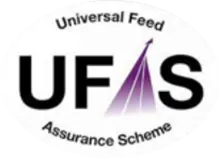A successful calving season doesn’t begin at birth — it begins weeks earlier with preparation, hygiene and nutrition. The calving pen is where a calf’s life starts, and it plays a defining role in its future health, immunity and performance. As Irish farms prepare for the busy calving months ahead, getting the basics right in calving management can make the difference between smooth transitions and costly health issues.
At Specialist Nutrition, we support farmers in optimising every stage of the transition period — from dry cow feeding to colostrum management — ensuring that both cow and calf are set up for success.
1. Why the Calving Pen Matters
The calving pen is more than just a space — it’s the calf’s first environment and one of the biggest determinants of its early health. Clean, dry, and comfortable conditions significantly reduce infection pressure, improve calf vitality and make colostrum feeding more effective.
As they say:
“This is the difference between colostrum going in first — or manure going in first.”
For block-calving herds, which face intense pressure over a short period, consistency and preparation are key. Pens must be ready before the first cow calves, and hygiene standards maintained throughout the season — even when workloads peak.
2. Preparing the Pen Before Calving Begins
A well-prepared pen lays the foundation for healthy calves and stress-free calvings. Farmers should aim to have calving facilities fully ready in advance of the first due date.
Key preparation steps include:
- Thorough cleaning and disinfection between calvings
- Deep, dry straw bedding to reduce bacteria build-up
- Good lighting and ventilation
- Secure drainage and no draughts
- Calm, low-stress atmosphere
Regular cleaning is vital, especially midway through block calving when labour is stretched. Consistency is what keeps calves healthy and prevents disease spread between cows.
3. The Link Between Nutrition and Calf Health
When calf health problems occur, two areas are almost always reviewed first — dry cow nutrition and calving pen conditions. The last 6–8 weeks before calving are particularly important.
Correct mineral balance and energy levels in the diet directly influence:
- Calf vigour and immunity
- Colostrum quality and antibody levels
- Calving ease and recovery
A balanced diet rich in selenium, magnesium and trace minerals helps build stronger calves and reduces metabolic issues in cows. Conducting a forage and mineral analysis before the dry period begins ensures your herd’s diet matches its nutritional needs precisely.
4. Feed and Water Access in the Calving Pen
As calving approaches, cows often experience a natural drop in appetite — yet maintaining energy and hydration is critical.
Farmers should ensure:
- Constant access to clean, fresh water
- Free access to feed with enough space to avoid competition
- Adequate feed barrier space to allow all cows to eat comfortably
Energy supplementation may be needed for cows struggling to maintain body condition, but this should always be guided by a nutritionist. As one of our advisors puts it:
“This is not the stage where you want cows to lose condition.”
5. Body Condition and Calving Comfort
Monitoring Body Condition Score (BCS) is essential throughout late pregnancy.
- Target: 3.0–3.25 at calving.
- Over-conditioned cows are more prone to milk fever and retained placenta.
- Under-conditioned cows face difficult calvings and lower fertility.
First-time heifers require special care, as they are more likely to experience calving stress. Discussing pain management options with your vet can help reduce stress and support faster recovery post-calving.
6. Technology Support on Modern Farms
Activity collars and rumination monitors have become valuable tools for pre-calving management. They provide early warnings of reduced movement or appetite, allowing farmers to detect potential calving issues before they escalate.
Technology shouldn’t replace observation, but it’s an excellent support system during busy calving seasons.
7. Hygiene and Timing in Colostrum Management
Calves are born without any antibodies — they depend entirely on colostrum for immunity and gut development. Therefore, cleanliness and timing are critical.
Best practices:
- Remove the calf from the pen soon after birth to limit pathogen exposure.
- Harvest colostrum as soon as possible using clean, disinfected equipment.
- Feed at least 3 litres of clean colostrum within 2 hours of birth.
- Use a Brix refractometer (≥22%) or colostrometer (green zone) to check colostrum quality.
Remember, every hour of delay reduces antibody absorption and increases disease risk.
Some farms use “cuddle boxes” — keeping the calf in sight of the dam while reducing direct exposure to bacteria. This small adjustment can significantly lower the risk of infections in newborns.
8. Hygiene Between Calvings
After each calving:
- Power wash and disinfect the pen.
- Replace bedding with fresh straw.
- Rinse and disinfect all feeding equipment and buckets.
Clean housing + clean harvest + quick feeding = the best possible start for calves.
9. The Specialist Nutrition Approach
Our nutritionists work with farmers to align feed management, mineral balance, and hygiene protocols for smoother calvings and healthier calves. We provide:
- Forage and mineral analysis to fine-tune pre-calving diets.
- Dry cow and transition mineral solutions like SN Protected Pre-Calver and SN Dry Cow Special.
- On-farm consultation for body condition management, colostrum protocols and calf rearing advice.
By managing the transition from dry cow to calving pen with precision, you’ll improve cow recovery, calf immunity and overall herd performance.
Set Your Herd Up for Success This Calving Season
Preparation, nutrition, and hygiene — when these three elements work together, your herd is primed for smooth calvings and thriving calves.
Contact Specialist Nutrition today to arrange a consultation on calving pen preparation, dry cow nutrition, or colostrum management. Our experts are here to help you build healthier herds and more productive seasons from the very first day of life.





